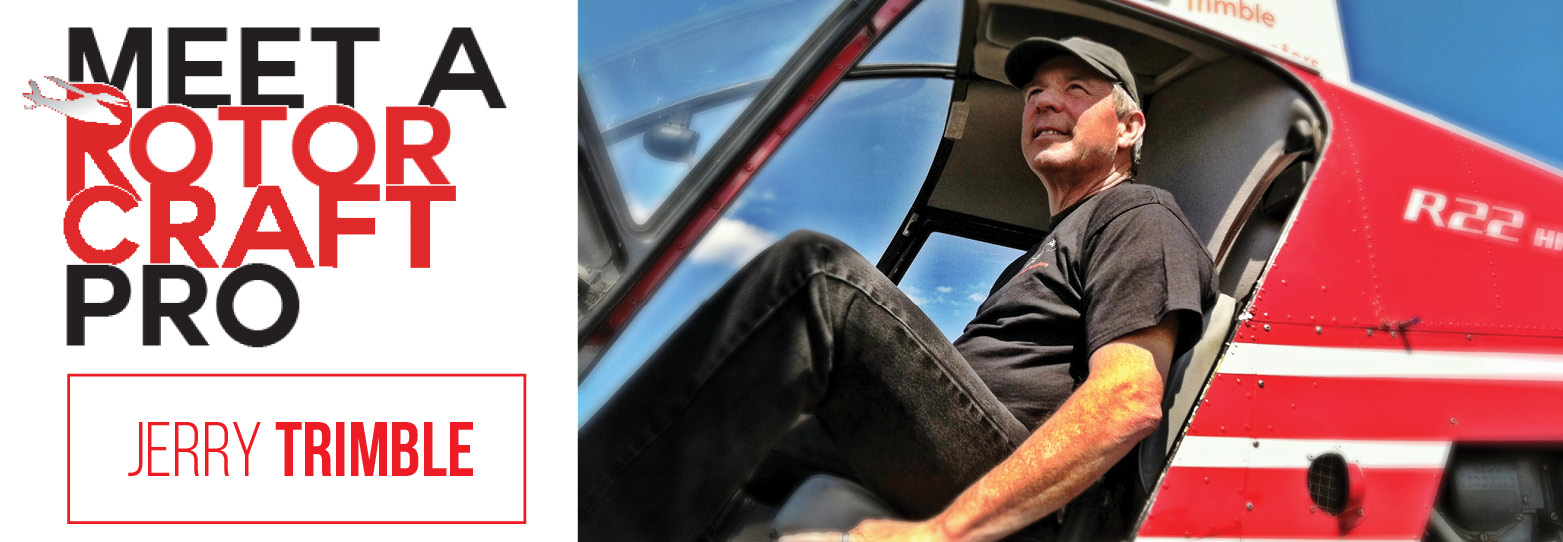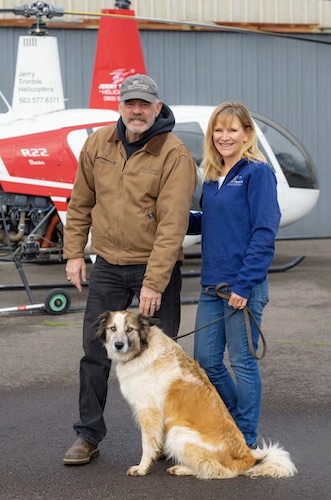|
Mar
14
2022
|
|
Posted 3 years 282 days ago ago by Admin
|
|

RPMN: What is your current position?
My wife, Alison and I own Jerry Trimble Helicopter Inc. We started the company in 2007 with one helicopter and one airplane. We provide primary and advanced flight training in both helicopters and airplanes. Our school is located in McMinnville, Oregon.
RPMN: Tell me about your first flight or experience with helicopters?
I flew with my dad, Robert Trimble, in one of his Bell 47s back in the ‘50s. He worked for Etna Helicopters along with his two partners – Bill Mathews and Erling Hertager.
RPMN: How did you get your start in helicopters?
My dad’s Friend Tom Pfeiffer had a contract to train pilots in Jakarta, Indonesia, and he had me fly over and get about 80 hours of training in a Bell 47. I was currently instructing in airplanes. I had about 700 hours airplane time when I started flying helicopters
RPMN: When and how did you choose to fly or work on helicopters? Or did they choose you?
I came back to Oregon and I got my commercial add-on with Herb Henderson at Henderson Aviation in Springfield Oregon in 1976. I had been driving a mix truck for Herb for his spray operations. Herb was spraying with a Bell 47 G4A.
RPMN: Where did you get your start flying or maintaining professionally?
I got my A&P at Northrop University in 1978 in Inglewood, California. I was instructing in airplanes at Hawthorn Field just southeast of LAX when a friend introduced me to Frank Robinson. One of Frank’s mechanics had just quit, and the ink was still wet on my A&P. Frank offered me a job as a mechanic on the experimental R22 prototype for FAA certification. It was quite an education working for Frank. The first prototype, SN 001, had an issue and ended up in the Pacific Ocean (This happened before I showed up.) When they fished it out of the water, Bob Golden, the pilot, was unharmed save for some scratches to his belly when the Coast Guard pulled him out of the water. It seemed like Bob’s only complaint about the entire water landing was that his watch got destroyed by the salt water. He kept asking Frank to buy him a new watch.
RPMN: If you were not in the helicopter industry, what else would you see yourself doing?
If I couldn’t fly helicopters anymore, I would fly airplanes. When I can’t fly either anymore, I want to move myself and my wife to Hawaii. I just want to sit by the pool in Maui drinking overpriced cocktails with exotic plants floating around the ice cubes and watch tour helicopters fly by!

RPMN: What do you enjoy doing on your days off?
My wife and I have a little hobby farm and I enjoy riding my John Deere tractor trying not to kill myself. I am much more dangerous on that tractor than I have ever been in an aircraft. That is just my opinion.
RPMN: What is your greatest career accomplishment to date?
Well, unfortunately I am no Chuck Yeager, nor have I won any air races at Reno in a P-51 Mustang. What gives me the most satisfaction personally at this moment in my life is to be a positive influence. By that I mean, I enjoy being involved with a flight school, to hear that the students are striving towards their goals. These students become flight instructors who, in the end, gain productive employment as a pilot. Seeing the progression is very rewarding to me. The fact that we are still flying R22 SN 011, which I worked on at the factory in 1979, is also important to me. I am never going to sell her. When my flying days are done, Alison and I are going to donate her to the Evergreen Museum here in McMinnville. But for now, she is still a working girl with 13,305 hours under her belt.
RPMN: Have you ever had an “Oh, crap” moment in helicopters? Can you summarize what happened?
The classic line that “Flying is hours upon hours of sheer boredom separated by moments of sheer terror.” Is somewhat close to the mark, however I don’t view most flying as boring. There have been some exciting moments. You can only hope your training takes over and that you make good decisions. Hopefully, that adrenaline rush with the shaky hands after you’re safely on the ground doesn’t give you a heart attack. I have been to the ground with two helicopter emergencies and one airplane emergency. I have made many precautionary landings due to weather or maintenance issues. As far as helicopters are concerned, I like to quote a former Air Crane pilot from Evergreen Helicopters; Wade Green said, “We are going to solve all of our inflight emergencies on the ground.”
RPMN: If you could give only one piece of career advice to a new helicopter pilot or mechanic, what would it be?
I’ll put three in one sentence: Make sure you have a passion for what you do, perform your duties to the best of your abilities, and if you don’t love aviation go find what you do love.
RPMN: In your view, what is the greatest challenge for the helicopter industry at this moment in time?
As an industry we need to educate folks on all the value helicopters can bring to the average taxpayer: from fighting fires to EMS to supporting the energy sector. The helicopter is not just an expensive, noisy toy for the wealthy. HPMM - Helicopter Pilots and Mechanics Matter!
READ MORE JAN/FEB 2022 ISSUE